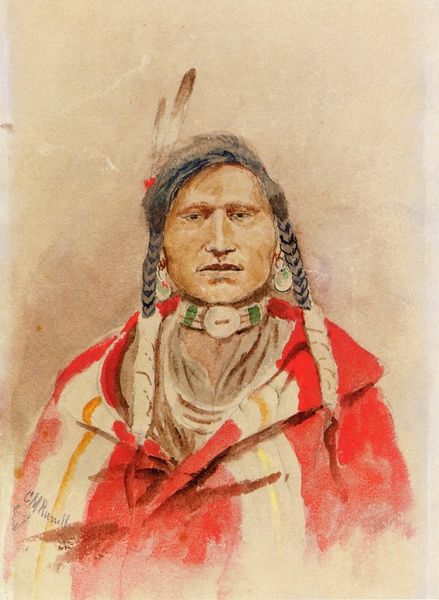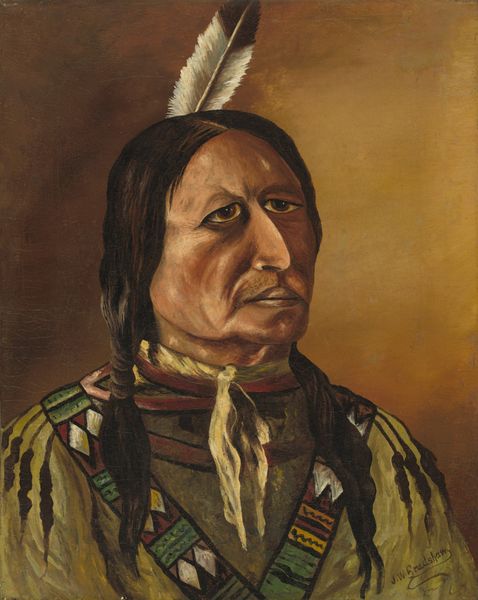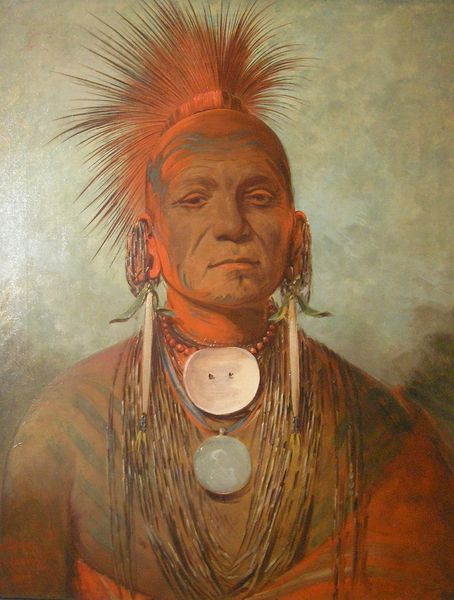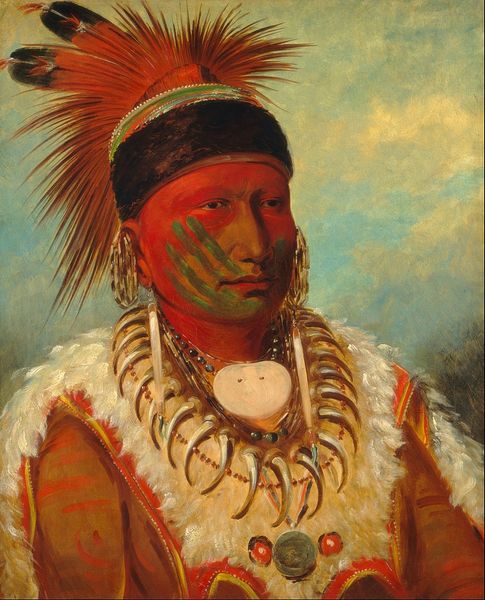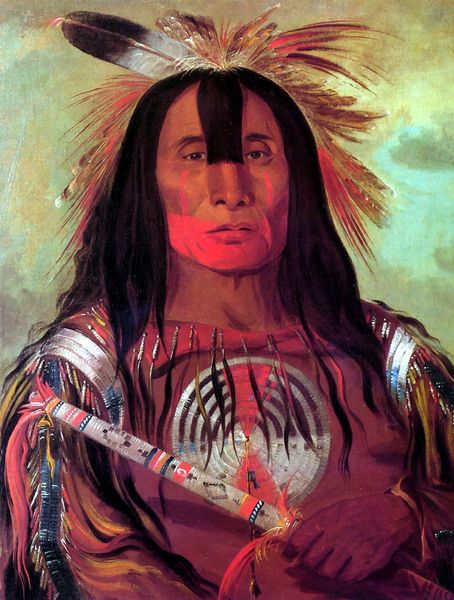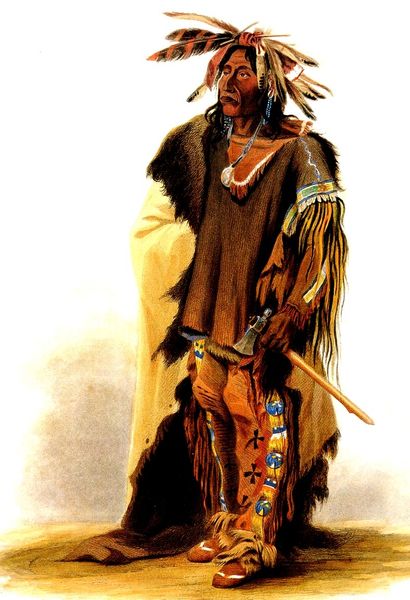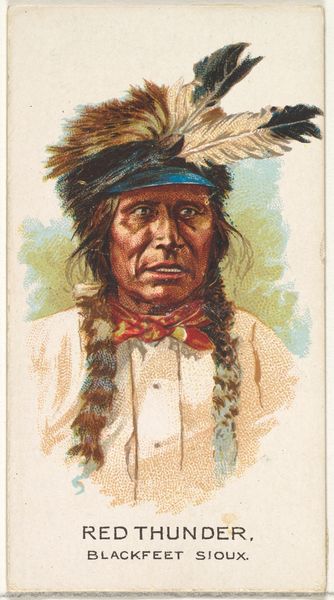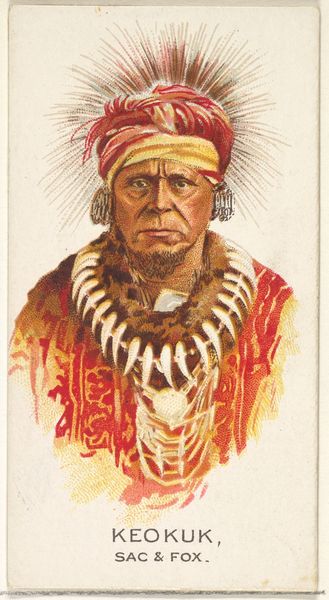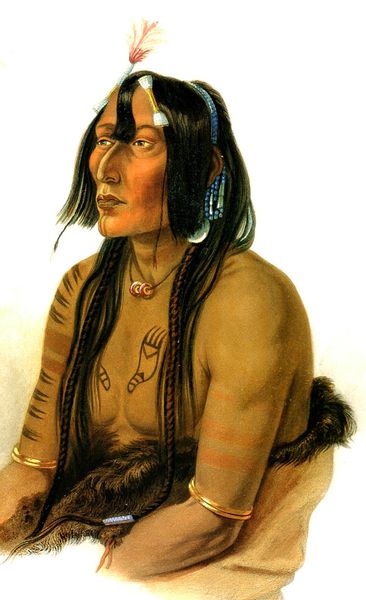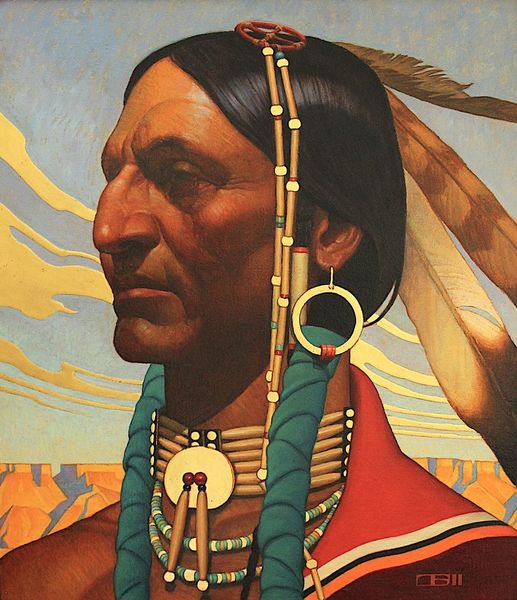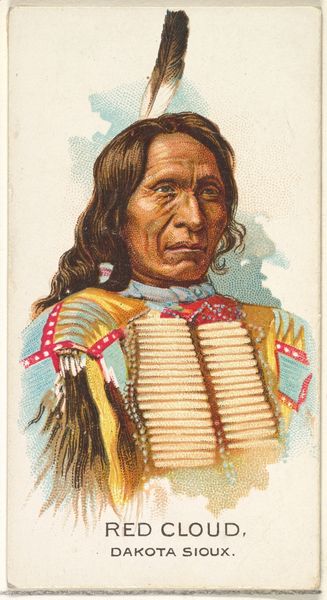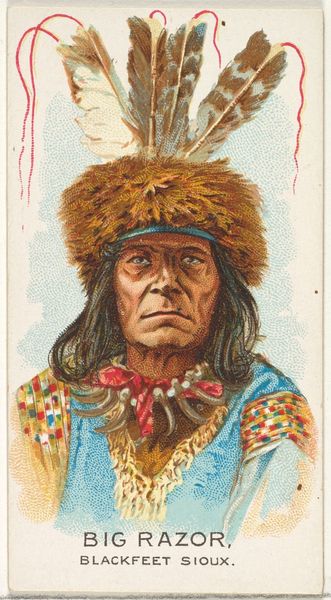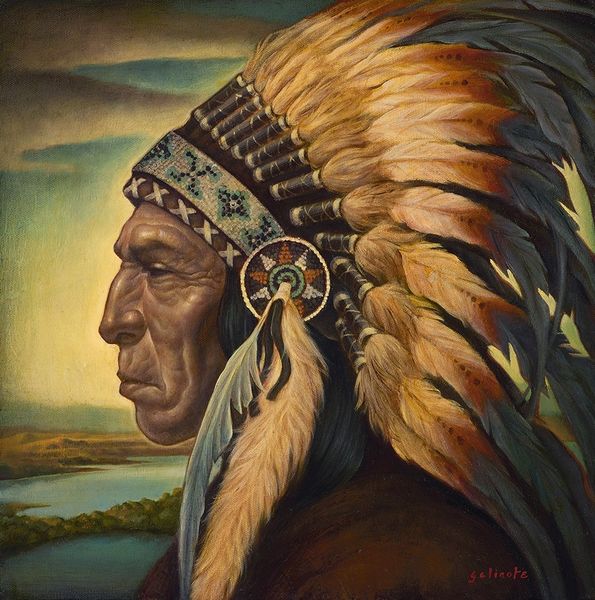
portrait
oil painting
Curator: Welcome to the audio guide for Charles M. Russell's watercolor, "Indian Brave," painted in 1898. Editor: I'm really struck by the artist's choice of medium. Watercolor gives it such a delicate, almost ethereal quality, wouldn't you agree? What strikes you most about its formal qualities? Curator: The layering of transparent washes allows Russell to build depth and create subtle variations in skin tone. Observe how the background seems to dissolve, focusing our attention solely on the brave's profile. The sharp lines defining his features against the blurred edges is striking, isn’t it? Editor: It is! I see how the lack of a defined background isolates the subject, allowing the eye to fully appreciate the intricate details of his clothing and adornments, such as the feathers and jewelry. Why do you think the artist would frame his face? Curator: Note that the composition places emphasis on a triangular arrangement formed by the line of the brave's face, the diagonal of his braid, and the subtle shadow cast on his chest. The braid with violet ornaments serve as a visual anchor drawing our eye down the piece. Doesn't the use of this geometric principle contribute to the overall stability and harmony? Editor: It does! So the formal balance complements and perhaps enhances, the subject matter itself. Do you think the subtle variations in the medium influence his portrayal? Curator: The watercolor lends an air of romanticism to the piece. Notice the romantic realism with which he articulates facial features—every shadow and contour serves to create a strong presence. Editor: Thank you, by understanding these formal structures I’ve increased my understanding of the aesthetic components of art! Curator: And I by verbalizing its elements am pleased that this artwork helps people focus and clarify visual thinking, the first step to appreciation.
Comments
No comments
Be the first to comment and join the conversation on the ultimate creative platform.
